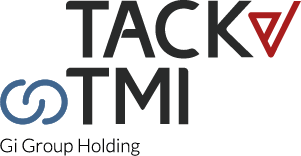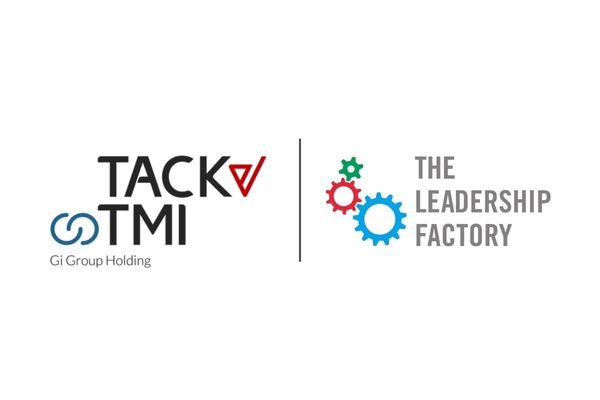Learning and Development Trends for 2023
We run through the key trends for learning and development (L&D) in 2023. Why they’re important & what they mean for organisations.
The current climate presents a series of challenges for organisations around the world. Primarily, there’s a skills shortage gripping many businesses right now. It is estimated that it is costing businesses around £6.6 billion annually due to difficulty in sourcing employees with the required skills.
A good learning and development strategy can help businesses to plug skills gaps a lot faster and more effectively. As the business landscape changes, so do the trends shaping learning and development strategies. To remain at the forefront of effective learning, learning and development professionals in business must stay up to date on trends and recognise how they can boost the success of their programs.
6 Learning and development trends for 2023
1. mLearning is expected to see significant growth
MLearning or mobile learning, is a way of accessing learning content through mobile devices. Mobile learning has been around for some time, but its ease of access and availability at the point of need mean that it will become increasingly popular in 2023.
Experts are confident MLearning will become a common method of learning as more companies utilise it to enable staff to acquire knowledge whenever needed, through a more convenient and accessible platform. Research suggests MLearning can raise learner efficiency by 43%, and as a result, mobile learners finish courses 45% faster than other learners.
With the continued rise of digital literacy, embedding learning in educational apps can be a more engaging and enjoyable way of learning new skills. With research revealing that two-thirds of people will use an app more frequently if it simplifies their lives. In 2023, more organisations will change their practices to create a more accessible learning experience.
2. Learning analytics will be more integral and advanced
Throughout your organisation, you will call upon analytics to help you make smarter, data driven decisions. From finance, to sales, to marketing, organisations use data across all functions to improve productivity and performance. Learning analytics will do the same to drive the effectiveness of L&D programmes.
In 2023, learning analytics will be essential to organisations, allowing them to identify trends in learning, measure success in achieving goals, and address challenges.
Utilising analytics in your L&D process will offer immediate, useful data to direct your organisation’s employee development, allowing businesses to build more successful programs and determine where to allocate future funds.
3. Bite-sized learning gets even smaller. Introducing, Microlearning.
Microlearning refers to a type of learning that introduces bite-sized pieces of information to the learner, at the point of need. Rather than investing extended periods of time studying a subject, employees can do a short, interactive assignment that is concentrated on a specific learning outcome.
It’s foreseeable that, mirroring our smartphone-driven, bite-sized intake of content in daily life, our approach to learning will also evolve to be similar. Accessing short, interactive pieces of learning content that are engaging and easily digestible.
The concept of microlearning aims to increase retention, by breaking down information into micro chunks that can be accessed at the point of need. In fact, research shows that microlearning increases employee focus and improves retention rates by 80%. Moreover, microlearning is 17% more efficient than traditional learning.
We expect the trend of microlearning to pick up pace in 2023, and continue to grow in the coming years. Government support of e-learning and the rise of mobile devices fueling gamified education are believed to contribute to growing microlearning market. Eventually, microlearning will be replaced by nano learning, a more concise way of delivering content, splitting topics into even tinier sections, with employees carrying out small tasks daily.
4. The rise of Immersive learning
AR and VR are rapidly becoming popular worldwide, revolutionising how we perceive and interact with our environment. The learning and development area is fostering immersive learning, an experiential training technique that utilises virtual reality to imitate real-world situations.
Throughout 2023, we will see a change in the way people consume learning. Digital learning will go one step further and move away from videos, encouraging an immersive experience in either AR or VR. The technology is there to make this happen; however, this trend is progressing slower than the rest.
Immersive learning is believed to be a highly effective way for learners to develop their knowledge and learn new skills. Designing an environment where learning is tailored to each person’s needs, allowing for personalised and adaptable content in real-time for a one-of-a-kind experience. Immersive learning also provides the opportunity to try out skills in a more interactive way, which may not be feasible in a normal learning atmosphere.
5. Upskilling and reskilling
As discussed in the opening of this article, there is a significant skills gap gripping many businesses right now. Organisations continue to struggle to find qualified talent to fill critical roles and drive their business forward. It is something that is on the mind of business leaders, with 71% of CEO’s citing it as a major business obstacle.
With organisations unable to hire the necessary skills, they are turning their attention inside the company to redevelop their current workforce; upskilling and reskilling is a significant part of the solution.
Through analytics and data, organisations will need to evaluate and asses specific competencies for each vacant role and understand what skills development is required to support current employees to move into new positions. By investing in upskilling and reskilling strategies now, companies are able to take the necessary steps to create a viable talent pool that is future ready and able to rise up to any future talent shortages.
Looking forward to 2023 and beyond, L&D is going through a huge transformation, and with a lack of skills available, labor reallocation through upskilling and reskilling will be crucial to an organisations survival.
6. Learning at the moment of need will be crucial
Most trends highlighted involve learning at the moment of needed, or in other words, learning in the flow of work. This learning style seeks to fulfill employees’ information requirements in the instant they require them, without interrupting their work.
Developments in L&D have enabled organisations to build asynchronous and accessible learning environments that give learners control. These settings give employees the freedom to learn when and how they want, no matter where they are or what device they’re using, and apply their knowledge instantly in their role.
It’s no surprise that more than half of learners now expect training to be delivered on demand and it is likely these figures will continue to rise as we progress into 2023. Learning at the moment of need is essential for keeping learners engaged and ensuring the success of a company’s learning and development program.
What will these changes mean for organisations?
What impact will these changes and trends have on your organisation? Fundamentally, it will mean reviewing and adapting your approach to learning and development. Traditional learning remains essential, yet to achieve better results, participation, and involvement, it is necessary to adopt modern teaching methods that keep up with trend changes.
Companies will also have to rethink their L&D strategies. It is no longer enough to train employees on an ad-hoc basis. For lasting success, employees must regularly acquire new knowledge and sharpen their expertise; this will ensure they thrive within your organisation rather than with a competitor.
Yes, these trends could mean significant changes to your L&D strategy, but they do not have to happen instantly. Organisations can begin to take small steps to incorporate current developments in learning and development to enhance their overall approach.
Why do organisations need to consider L&D in 2023?
What if you choose to ignore the trends emerging in L&D? Companies commonly overlook the significance of L&D, wrongly thinking it’s not a necessity. This can result in issues like:
- A loss of employees – We mentioned earlier that retention rates rise when you offer great learning and development opportunities. Conversely, if you don’t put a lot of effort into L&D, you will lose employees. According to Indeed, a lack of growth or career development is one of the top four reasons why people quit their jobs.
- Lower job satisfaction from employees – Similarly, a lack of learning and development opportunities are strongly linked to low job satisfaction amongst most employees. People take no joy in a job when they feel as though it’s stifling their development. Ultimately, this is why many leave, but those that stay are unlikely to put 100% effort into tasks.
- A lack of productivity – Following on from above, what happens when employees aren’t satisfied or giving it their all? Productivity levels drop dramatically. Moreover, consider an organisation that lacks good learning and development protocols. It tends to mean your employees aren’t as well-trained as they could be. By not teaching them new things or providing chances to learn more effectively, your business suffers. They may be less productive than employees that do have L&D opportunities.
- A loss of revenue – Everything we have mentioned above will lead to this. If you have low retention rates, what does this mean? You spend more money hiring new employees all the time. If your employees aren’t working efficiently and productivity dips, what else is likely to happen? Your work output dwindles, which could translate to a loss of sales. Overall, your business is losing revenue because it isn’t taking L&D seriously. Neglecting upcoming trends may impact your organisation’s success and advancement.
How to utilise the learning and development trends for 2023
You’ve seen the trends, and you know why they’re important, yet how do you utilise them? Tack TMI’s team of learning experts can support your organisation to leverage the latest developments in L&D to enhance your 2023 strategy. Through our blended solutions and innovative techniques we can transform the way employees acquire knowledge, helping organisations to stay ahead of the curve and create a workforce that is equipped to tackle the challenges of the future. Get in touch to find out how your organisation can unlock the power of the latest L&D trends to drive success.



